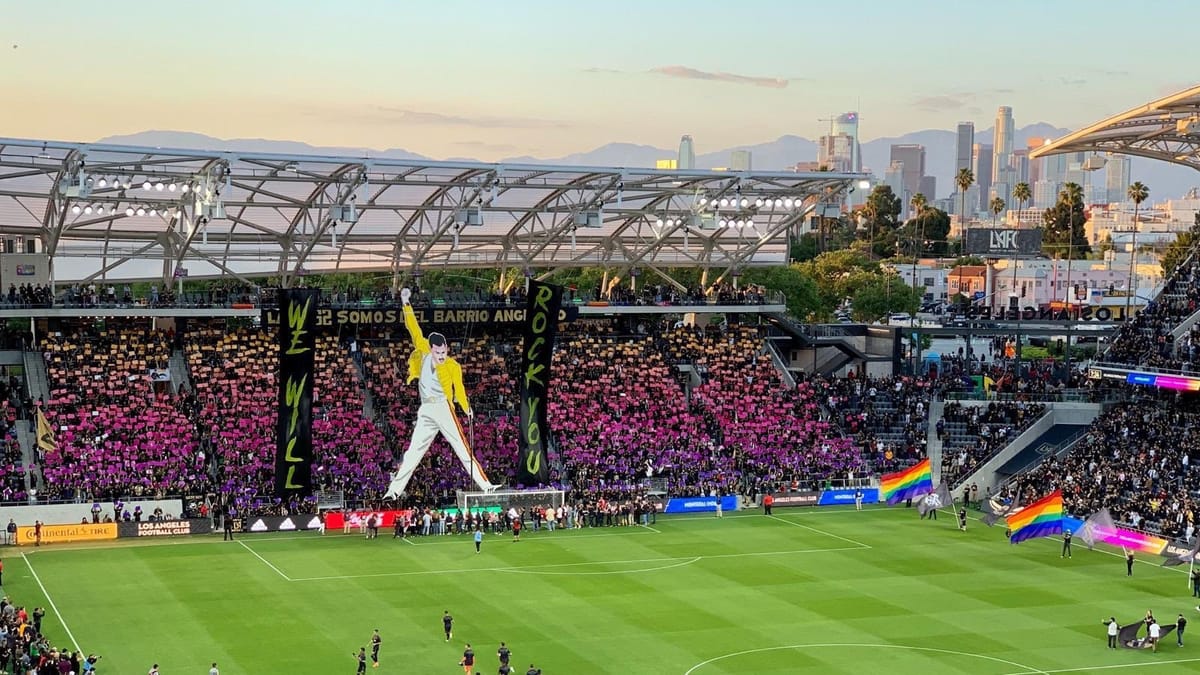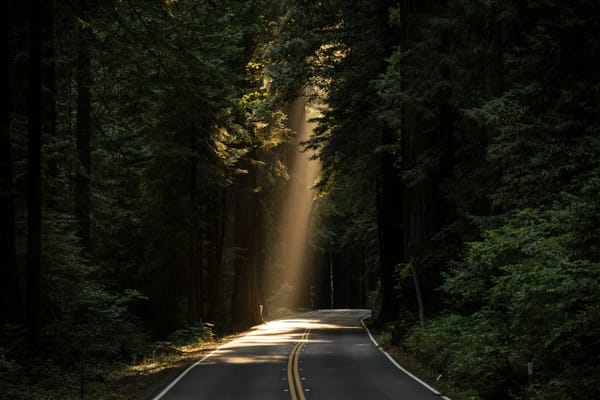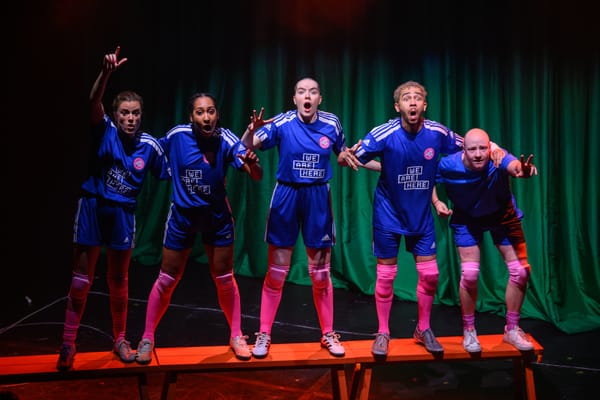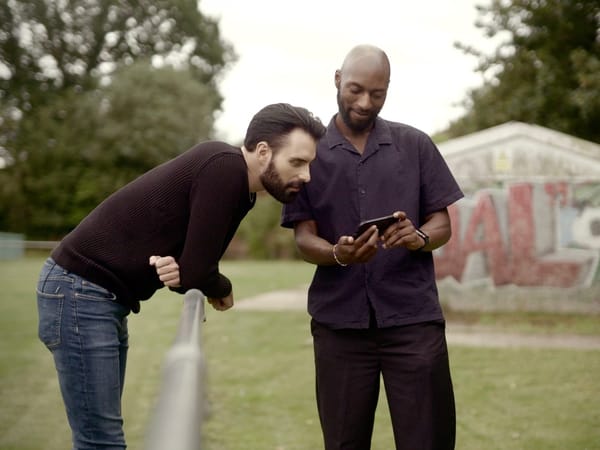The state of the LGBTQ+ community in US soccer
Soccer isn't America's biggest sport. Here's how that affects LGBTQ+ inclusion in the game.

It's well documented that US soccer culture differs wildly to European football culture. But how does that impact LGBTQ+ inclusion in the US game?
Who better to answer that question than Luke Klipp, President of the Pride Republic (Los Angeles Football Club's LGBTQ+ supporter group) and co-host of LGBT FC podcast.
A note up front: This opinion piece speaks only to the men’s game. For reasons that deserve an entirely different write-up, the women’s game is wholly different.
Soccer has always occupied a strange space in the United States. It is easily one of the most popular sports for American youth, but quickly loses its cachet as those youth grow older and are drawn to one of the country’s more well-known sports, like basketball, baseball, or football (our version). Most soccer fields in the US are in use nearly all the time, but almost always by children under the age of 12.
Growing up in the 80s and 90s, I understood that soccer is not an “American” sport. I played it, sure, but it was “queer.” Grown men would fall to the ground at the slightest touch and act like they were really hurt when they weren’t, and since the United States was not as good as so many other countries around the world, soccer was definitely only a sport for weirdos who couldn’t dribble a basketball or hit a baseball.
So it is in some ways that queer spaces in the American soccer scene today are almost a self-fulfilling prophecy. Unlike other parts of the world, where a man’s worth is measured in his ability to ripple the back of the net with a laser-precision strike from 30 yards out, in the US what makes a man is his ability to hold onto the football and get back up after a head-crunching tackle.
Our Major League Soccer is still a nascent association, nearing 30 years but having had only 10 teams for the first decade of its existence. And, in MLS, LGBTQ+ visibility is a regular occurrence in some stadiums and nowhere to be found in others. The difference owes largely to the cities in which teams are located, and their receptivity to LGBTQ+ people.
Teams based in cities like Vancouver, Seattle, Portland, Los Angeles, Austin, Atlanta, Denver, and Minneapolis regularly feature Pride flags in their supporters’ sections. LGBTQ-specific supporters groups are organized in half these places, and the rest of them openly seek and uplift LGBTQ+ members within their broader supporters’ culture.
Another feature of Major League Soccer is fanbases that run the demographic spectrum, which can also influence the openness of a particular team. The US is fairly unique in that it is a majority-white country with a soccer culture that is overwhelmingly Latino, reflecting the country’s remarkable diversity, and also cultural ties to a sport that for a long time has been rejected by non-Latino white communities. In a few cities, these cultural differences can affect teams’ receptivity to their LGBTQ+ supporters.
As a supporter of the Los Angeles Football Club, and as President of LAFC’s LGBTQ+ supporters group, Pride Republic, I have been fortunate to be a part of a very accepting and friendly fanbase while also learning from a largely Latino supporters culture that shapes the club’s ethos and that has opened my eyes to new ways of understanding and listening.
I have also seen how Pride Republic’s visibility and presence in LAFC’s supporters’ culture has created safe spaces for others to be open about queer loved ones and experiences that perhaps they might otherwise have felt the need to keep silent about.

This openness has not come easily, however, as the very first game LAFC played in its new stadium was marred by a homophobic chant that is so popular in Mexico that it has resulted in protocols, sanctions, and even home games where the home crowd has been banned from attending. Putting a halt to that chant required a concerted effort that included the front office, the team, the leadership of the club’s supporters groups, and a nascent Pride Republic organization, all of whom called out the chant as not part of our culture and made clear from that point forward that anyone using it would face consequences.
The turning point for many in LAFC’s supporters culture, however, came a year later, when the club’s Pride night featured an incredible tifo of Freddie Mercury – bridging pop culture with LGBTQ+ sensitivities in an unforgettable moment. That tifo – the effort around its creation, and the symbolism it offered – was the night that I felt not just accepted but also seen and wanted as a part of our black and gold familia.
Across the country, the state of affairs for LGBTQ+ people right now is precarious. A lot will hinge on what happens in this year’s national election. Already, though, a number of states have enacted draconian laws largely targeting transgender youth.
The only plausible explanation for this trans panic in our state legislative houses is cynical right-wing politicians exploiting people’s fears of the unknown as a way to distract from these politicians’ inability to govern. This has worked to a degree, but it also appears we may be seeing the end of the political benefits of these attacks on vulnerable people, as electorates are increasingly voting out of office those officials whose primary accomplishments are around anti-LGBTQ+ legislation.
This more recent regression of LGBTQ+ rights is significant in how it has bled into MLS and supporters culture. Some more liberal cities – like those noted earlier – have had signs of protest at home games. LAFC’s own Pride Republic flew a “We Say Gay” flag at Inter Miami just months after Florida’s “Don’t Say Gay” bill was signed into law. And it’s fair to say that the plethora of bathroom bills and other attacks on transgender people make for a patchwork quilt of safe vs. unsafe states, with MLS teams playing across that gamut.
It does appear to have, at least for now, halted our progress toward making the game more inclusive. Those clubs – like my home Los Angeles Football Club – that have been LGBTQ+ inclusive remain so. Those clubs that have been less supportive of the LGBTQ+ community also remain as such, even as we are seeing increased efforts around the globe to raise LGBTQ+ visibility and inclusivity in the beautiful game.
All of which is to say that… the state of the LGBTQ+ community in soccer in America today is hopeful, but guarded. So long as it remains difficult to organize LGBTQ+ supporters in places like Salt Lake City, Houston, and Miami, there is work to be done, but seeing the progress in other places is cause for optimism. LGBTQ+ supporters are finding a space in MLS that is generally more welcoming than in other professional sports (see opening remark about the queerness of soccer in the United States), and this environment does make the game uniquely inviting where other professional sports have been lacking. And that is why I remain hopeful: even as we face ongoing challenges, we are also more visible than ever.



